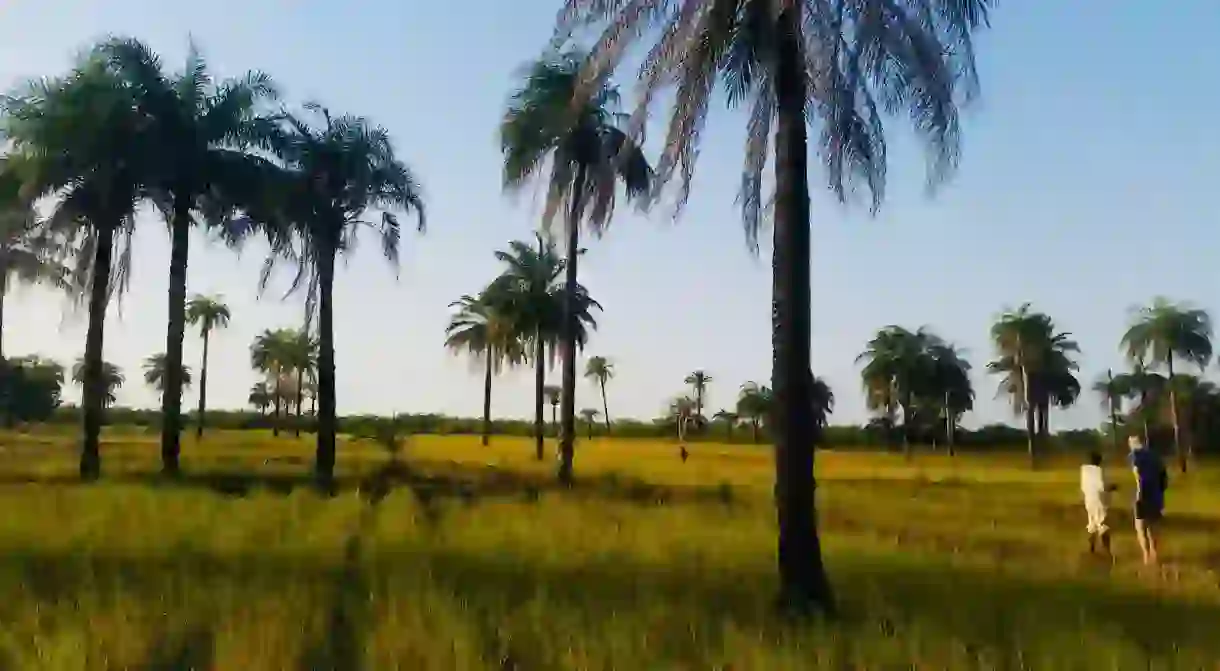La Fête du Roi: Celebrating Senegal’s Southern King

From warrior dancing and wrestling contests to great feasts and spiritual rituals, the Fête du Roi (Festival of the King) is an annual tradition in southern Casamance. Bringing together local villages to celebrate the King of Oussouye, the Fête du Roi instils peace and solidarity in a community once known for conflict. Here’s everything you need to know.
Who is the King of Oussouye?
To understand the Fête du Roi, you need to understand the Roi, as the King of Oussouye is not your traditional monarch. The Oussouye royal family (the earliest recording of which dates back to 1903 but is thought to be many centuries old) doesn’t adhere to a customary line of succession, instead choosing its kings on merit. On the death of the previous king, village elders will meet to determine whether there is a worthy replacement amongst the three main families in the Kingdom. If unconvinced, there is no king (Oussouye was king-less between 1984 and 2001), but if somebody is chosen, they cannot refuse or later resign; being the King of Oussouye is a job for life.
The current king, Sibiloumbaye Diédhiou, had previously been a mechanic and hotel security guard called Olivier before he was chosen by the elders in 2001 to lead a completely different life. A life, the king admits, is “more difficult now than before”.

What is the King’s role?
This ‘difficulty’ likely emerges from the many tenets and customs of the King’s role. On the one hand, he is a spiritual leader: the conductor of animist traditions and rituals, he is understood to collaborate with the animist god Ata Emit and his spirits by interpreting signs in nature and relaying the messages to his people. On the other, he plays the role of local mediator. The Oussouye Kingdom encompasses 100,000 people in 17 Diola villages across Casamance, and the King presides over any conflicts, helping to preserve peace and social cohesion.
Traditionally clad in red robes and a red hat (no-one else in Oussouye wears red), accompanied by a straw broom, the King holds court from a sacred wood on the outskirts of Oussouye town; his fittingly humble ‘Royal Palace’. From here, he sets the Kingdom’s agenda to ensure harmony and prosperity, such as setting the dates for ceremonies and allocating lands to farmers. Rice cultivated on the royal paddy fields is used to feed his people during the feasts of the Festival, as well as nourish the poverty-stricken year-round.

What is the Fête du Roi and why is it important?
In short, the King of Oussouye is a pretty big deal, so each year toward the end of the rainy season in Senegal, the villages of the Kingdom come together to celebrate him during the month-long Fête du Roi, known as ‘Le Houmabeul‘ in Diola. Like many festivals, it is a time of thanks and praise. A chance to thank Ata Emit for bringing the rains and pray for a good harvest and peace. A celebration of unity and community, where diplomatic relations take place between village elders, as well as religious and political leaders.
It’s also an explosion of colour and noise with local Diola warrior dancing and chanting happening on an almost nightly basis. Each village will don their traditional garb and challenge the others in amicable contest, the most prized of which is wrestling. Fighting for pride, contestants are split according to age, gender and build to ensure even contests, before grappling with one another until a head, bottom or back touches the ground beneath their feet.

Tips for visiting
With its verdant forests, mangrove-filled backwaters and white sandy coast, the Oussouye Kingdom is one of the most beautiful areas of Senegal. Getting there is relatively easy from Dakar with direct flights to Ziguinchor or Cap Skirring (25 and 20 miles (40 and 32 km) from Oussouye town respectively), as well as an overnight ferry.

Geographically stunning all year round, visiting Oussouye during the festival sheds light on an ancient African society in action in the modern world. Roads to Oussouye town may be more congested than usual, village shops may close a little early, but on the whole the Kingdom does not stand still during the celebrations. However, with it taking place in early September – October (September 15 – October 15 in 2018), the heat can be stifling, so only pack light, breathable clothes. Just make sure they’re not red.














